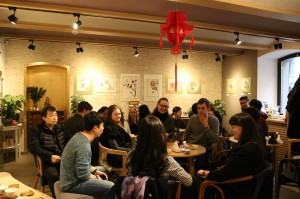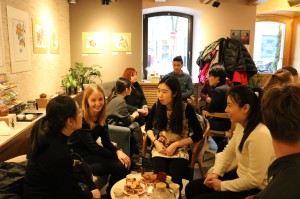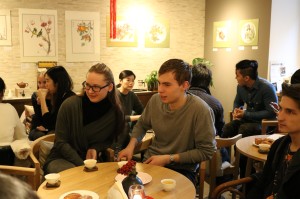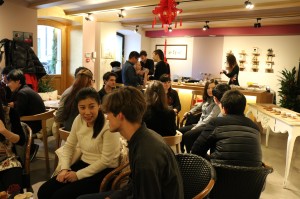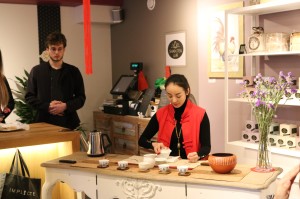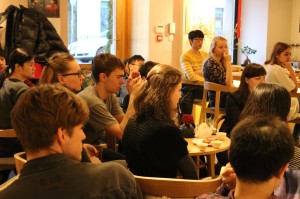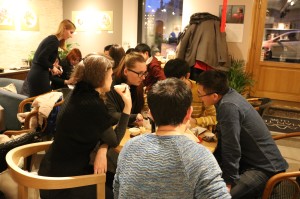Chinese Style Tea Party: Sinology, Peking Opera and Tea Art
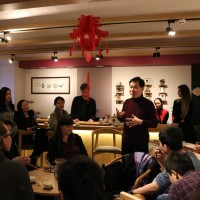
The first Chinese corner organized by Faculty of Humanities, Latvian University was held in Shan Tea, a local tea store at 6:30 pm on 1st of June, 2016, EET. It was again hosted by Dr. Agita Baltgalve, professor of Sinology at the Faculty. About thirty people took part in this activity. They included undergraduate and graduate students who specialized in Sinology, Chinese language teachers who taught at the Faculty, Chinese language teachers from Confucius Institute, some Chinese students studying in Latvia and Chinese immigrants living in Riga. This time they talked about tea while enjoying themselves with Chinese tea. Ms. Yang, owner of the store, performed tea ceremony as the initial activity which grabbed enough attention from the audience who photographed and videotaped the whole process. The first serious Chinese corner activity, however, was to introduce one’s friend who was present. Everyone felt entertained by the element of interaction which was absent in regular self-introduction. Mr. Li Tao, counselor of Chinese Embassy at Latvia, was invited to give a talk on Chinese tea culture and Peking opera. Many students thought they learned a lot from this talk. The highlight of this Chinese corner was group work, though. Every group had both Chinese teachers and Latvian students who were given a list of types of Chinese tea and Latvian tea. The Chinese teacher’s job was to introduce the types of Chinese tea to the Latvian students, who translated name of Chinese tea into Latvian after having understood the explanations. The Latvian students introduced Latvian tea to the Chinese teachers, particularly the appearance, the source and the drinking methods, in great details, so that they could come up with a Chinese name for the Latvian tea through much cross-questioning. As tea grows in the big picture of certain local plant ecology, equivalent expressions are hard to find. This fact results in plenty of explanation work and contributes to meaningful conversing and communication in Chinese. The activity resembled jigsaw puzzles because it worked on information asymmetry and facilitated conversation practice. As usual, Chinese corner ended with free talk.
To sum up, Chinese corner this time enhanced Latvian students’ understanding of Chinese tea culture and enabled them to pick up some useful phrases related to drinking tea.

